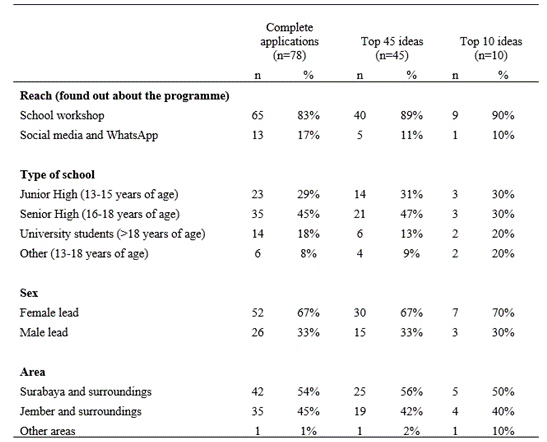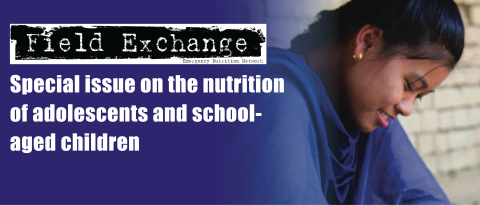Anthropometric assessment of nutritional status in school-aged children and adolescents
By Natasha Lelijveld
Natasha Lelijveld is a senior nutritionist at ENN. She has previously worked in research at Malawi-Liverpool Wellcome Trust, the Hospital for Sick Kids in Toronto, the London School of Hygiene and Tropical Medicine and the No Wasted Lives initiative at Action Against Hunger.
Location: Global
What this article is about: This article discusses anthropometric assessment in school-aged children and adolescents.
Key messages:
- Despite some increase in the number of studies assessing nutritional status in school-aged children and adolescents in recent years, these age groups remain largely overlooked in international and national research, policies and guidelines.
- For anthropometric assessment, the range of different age categories, reference data and indicators used hinders the understanding of malnutrition in these age groups.
- More data and greater standardisation of anthropometric indicators would aid efforts to increase nutrition programming, policies and guidelines for school-aged children and adolescents.
Being under- or over-nourished during childhood and adolescence is associated with adverse consequences including the risk of infectious disease, poor pregnancy outcomes, lower educational attainment and the risk of earlier onset of non-communicable diseases (Black et al, 2008; WHO, 2016). Across all age groups, anthropometric status is used to estimate nutritional status and subsequent health risks. However, there is currently a lack of evidence, clarity and standardisation on assessing and classifying malnutrition in school-aged children and adolescents. This hampers advocacy efforts around the scale and burden of malnutrition in children older than five years of age and subsequent investments into research and interventions to tackle this challenge. The nutrition of children aged five to 19 years is regularly overlooked in international and national development priorities, policies and guidelines. There has been very little investment to date in improving the nutritional status of this age group, despite the nutritional sensitivity of this stage in life and the potential for impact. There is also a lack of global and national nutrition targets identified for this age group and thus little motivation for assessing their nutritional status or for including them in national surveys.
In recent years, there have been positive strides to spotlight the importance of school-age and adolescent nutrition, including recognition in global initiatives such as The Lancet Commission on Adolescent Health and Wellbeing (Patton et al, 2016). In addition, the nutritional needs of adolescent girls are mentioned in the Sustainable Development Goals although the indicators are only for anaemia (Sachs, 2012; Ali et al, 2020). Large global datasets have also been recently utilised to summarise the prevalence of malnutrition in adolescents1 and anthropometric data has most comprehensively been reported in the papers summarised in Table 2. However, the age ranges used vary significantly in the reports and the reference data used to define thinness and overweight also varies, being either the World Health Organization (WHO) 2007 reference or the International Obesity Task Force (IOTF) reference, each with slightly different cut-off values (Table 1). Ambiguity and variations in how anthropometric status is defined is a major issue in understanding global and national prevalence rates, comparing rates across settings and understanding trends.
Table 1: Summary of references and cut-offs used for school-aged children and adolescents

The Benedict et al paper (2018) was the first demographic and health survey (DHS) report to use adolescent-specific definitions of thinness and overweight (based on the WHO 2007 reference). Usually, DHS presents prevalence rates for 15 to 19-year-olds using adult thresholds i.e., body mass index (BMI)<18.5 for thinness and BMI>25 for overweight. This tends to greatly overestimate the prevalence of thinness and marginally underestimate the prevalence of overweight in adolescents. The WHO recommended definition for thinness, based on the 2007 reference, is BMI-for-age z-score <-2 and BMI-for-age >+1 for overweight. The WHO reference uses primary data from adolescents in the United States of America in the 1970s but is statistically adapted to reflect more international norms based on the WHO 2006 reference for children under five years of age. The IOTF reference uses data on children from six countries to better align overweight and obesity estimates for children and adolescents with adult cut-offs. The threshold for thinness in this reference is aligned to adult BMI<18.5 and overweight is the equivalent to BMI≥25 in adults. The IOTF reference results in a greater prevalence of thinness and a lower prevalence of overweight than the WHO reference. Often IOTF thinness data is presented as “Grade 1 thinness”; this is not the same as a BMI z-score <-1 but it is similar.
Another widespread issue in the literature is the interchangeable use of the terms, thinness and underweight, making it difficult to know whether BMI or weight-for-age have been utilised. The variations between different references and other issues associated with anthropometry, including the effect of the differential timing of the adolescent growth spurt and the impact of muscularity on the accuracy of the references, make anthropometric assessment of this age group especially complex. Several previous studies have discussed these issues in detail (Tumilowicz et al, 2019; Rolland-Cachera & ECO Group, 2011). In the recent papers highlighted in Table 1, the prevalence of overweight was generally higher in school-aged children and adolescent girls in low- and middle-income countries than in boys. It was highest in the Middle East, ranging from 15-34% across reports. For thinness, there was far less data and almost no data on boys. For girls, the highest prevalence was in South Asia, at approximately 23%. Trend data has found the prevalence of obesity has increased globally from 0.7% in 1975 to 5.6% in 2016 in girls and from 0.9% in 1975 to 7.8% in 2016 in boys. The prevalence of thinness decreased from 9.2% in 1975 to 8.4% in 2016 in girls and from 14.8% in 1975 to 12.4% in 2016 in boys (NCD Risk Factor Collaboration, 2017).
Table 2: Summary of recent reports presenting prevalence rates of global adolescent anthropometric status
.jpg?w=615)
The increasing number of studies presenting prevalence data for malnutrition in the school-aged children and adolescent population is promising. However, the heterogeny in age categories, reference data and indicators used hinders our understanding of the nutritional problems faced during this influential life period. More data and greater standardisation of anthropometric indicators would aid programmers and policymakers to monitor trends, design solutions and set national and global targets.
For more information, please contact Natasha Lelijveld at natasha@ennonline.net.
1See research summary item in this edition of Field Exchange entitled “What’s new in adolescent nutrition at The DHS Program”
References
Akseer N, Al-Gashm S, Mehta S, Mokdad A and Bhutta ZA (2017) Global and Regional Trends in the Nutritional Status of Young People: A Critical and Neglected Age Group. Annals of the New York Academy of Sciences, 1393, 3-20.
Ali Z, Lelijveld N, Wrottesley S and Mates E (2020) Adolescent Nutrition Mapping Study: A Global Stakeholder Survey of Policies, Research, Interventions and Data Gaps.
Azzopardi PS, Hearps SJ, Francis KL, Kennedy EC, Mokdad AH, Kassebaum NJ, et al. (2019) Progress in Adolescent Health and Wellbeing: Tracking 12 Headline Indicators for 195 Countries and Territories, 1990–2016. The Lancet, 393, 1101-1118.
Benedict RK, Schmale A and Namaste S (2018) Adolescent Nutrition 2000-2017: Dhs Data on Adolescents Age 15-19. ICF.
Black RE, Allen LH, Bhutta ZA, Caulfield LE, De Onis M, Ezzati M, et al. (2008) Maternal and Child Undernutrition: Global and Regional Exposures and Health Consequences. The lancet, 371, 243-260.
Caleyachetty R, Thomas G, Kengne AP, Echouffo-Tcheugui JB, Schilsky S, Khodabocus J, et al. (2018) The Double Burden of Malnutrition among Adolescents: Analysis of Data from the Global School-Based Student Health and Health Behavior in School-Aged Children Surveys in 57 Low-and Middle-Income Countries. The American journal of clinical nutrition, 108, 414-424.
NCD Risk Factor Collaboration (2017) Worldwide Trends in Children’s and Adolescents’ Body Mass Index, Underweight, Overweight and Obesity, in Comparison with Adults, from 1975 to 2016: A Pooled Analysis of 2, 416 Population-Based Measurement Studies with 128.9 Million Participants. Lancet, 390, 2627-2642.
Ng M, Fleming T, Robinson M, Thomson B, Graetz N, Margono C, et al. (2014) Global, Regional, and National Prevalence of Overweight and Obesity in Children and Adults During 1980–2013: A Systematic Analysis for the Global Burden of Disease Study 2013. The lancet, 384, 766-781.
Patton GC, Sawyer SM, Santelli JS, Ross DA, Afifi R, Allen NB, et al. (2016) Our Future: A Lancet Commission on Adolescent Health and Wellbeing. The Lancet, 387, 2423-2478.
Rolland-Cachera MF and European Childhood Obesity Group (2011) Childhood Obesity: Current Definitions and Recommendations for Their Use. International Journal of Pediatric Obesity, 6, 325-331.
Sachs JD (2012) From Millennium Development Goals to Sustainable Development Goals. The Lancet, 379, 2206-2211.
Tumilowicz A, Beal T, Neufeld LM and Frongillo EA (2019) Perspective: Challenges in Use of Adolescent Anthropometry for Understanding the Burden of Malnutrition. Advances in Nutrition, 10, 563-575.
WHO (2016) Consideration of the Evidence on Childhood Obesity for the Commission on Ending Childhood Obesity: Report of the Ad Hoc Working Group on Science and Evidence for Ending Childhood Obesity, Geneva, Switzerland.


